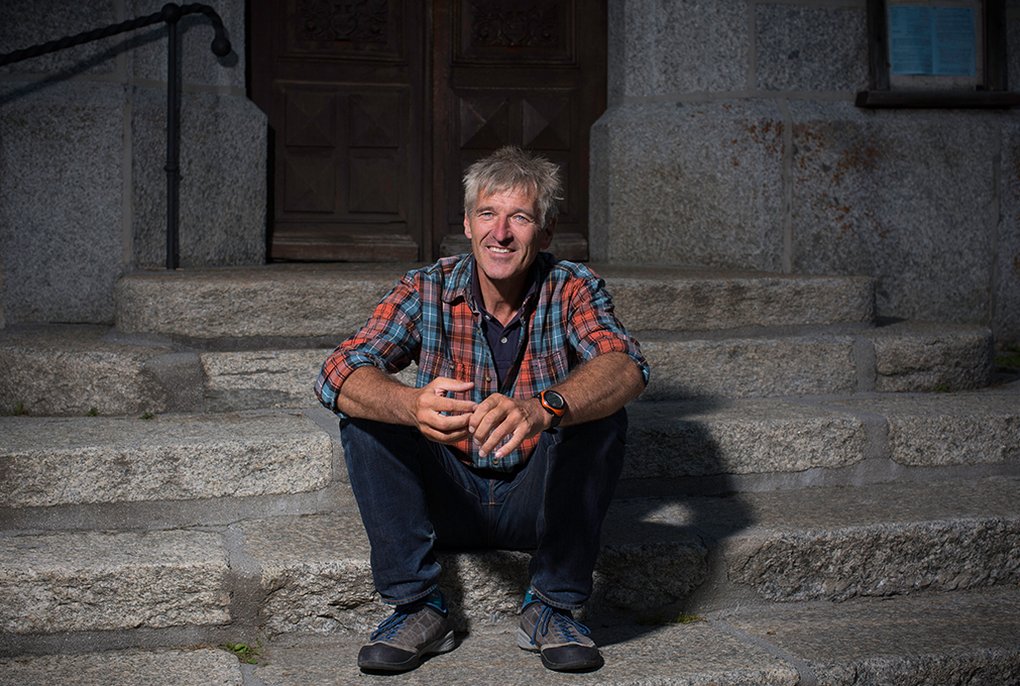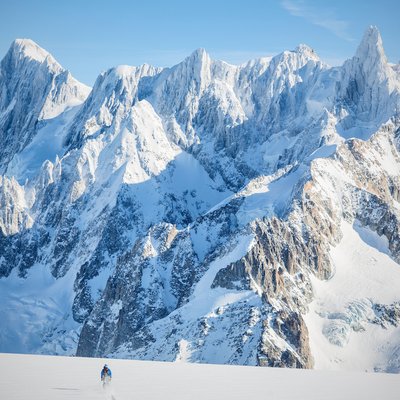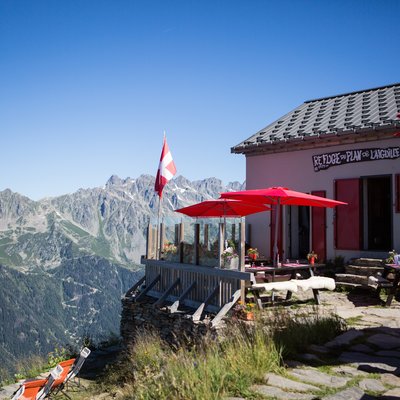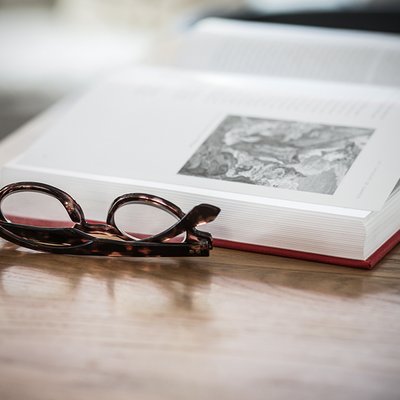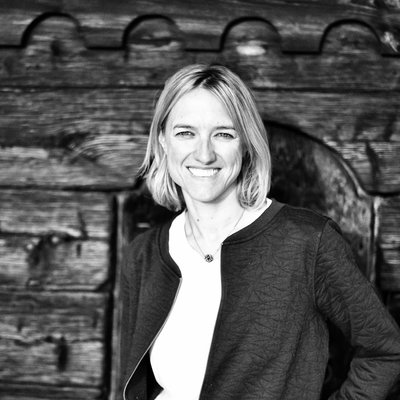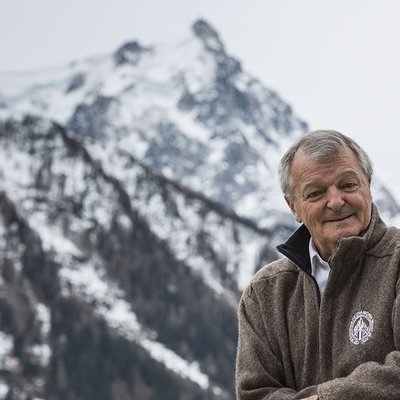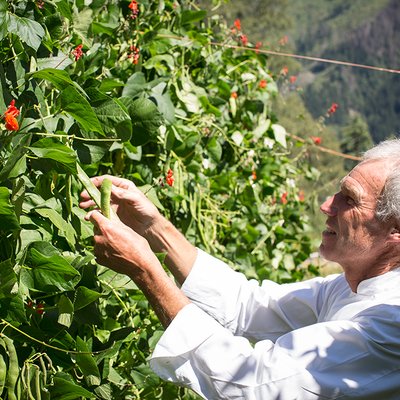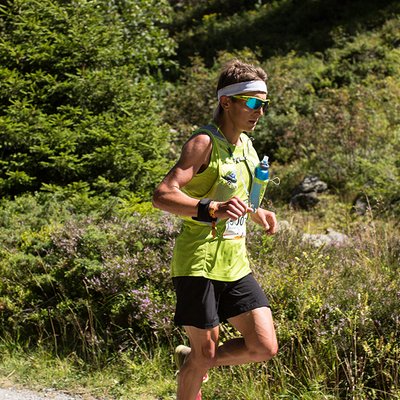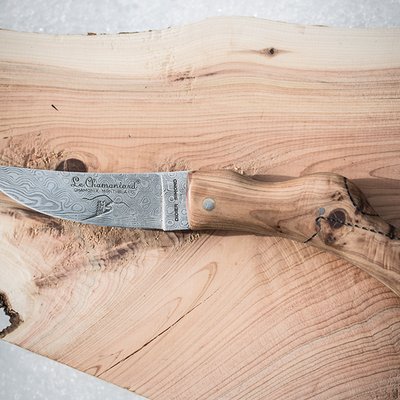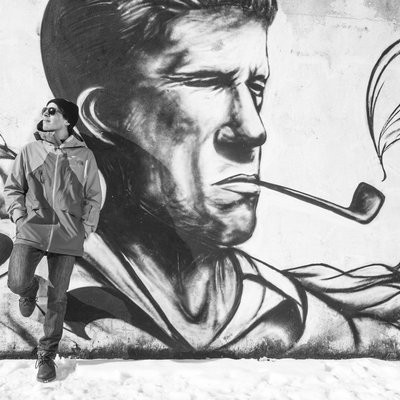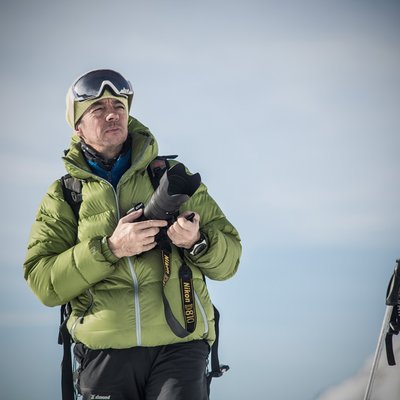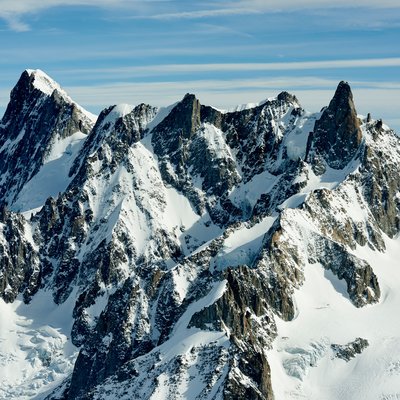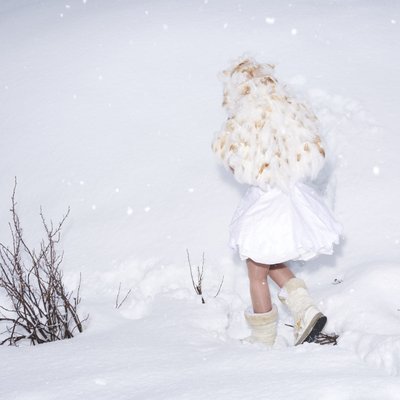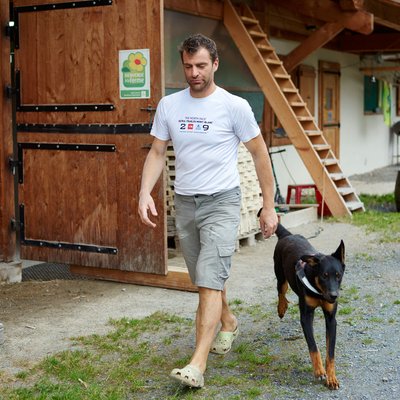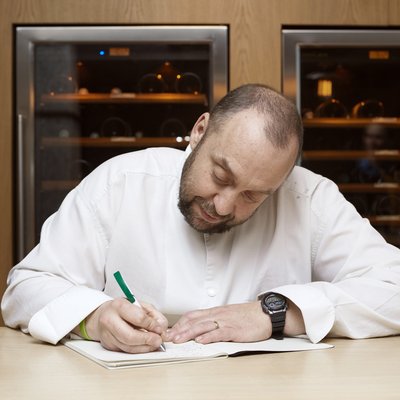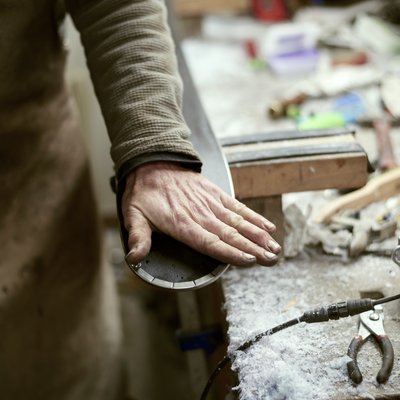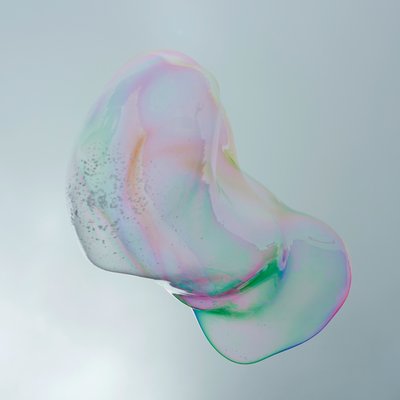Delicate Giants
The icy glaciers of the Mont Blanc massif have shaped the lives of the local people for many centuries. Environmental changes can have drastic effects on the delicate glacial ecosystem. Glaciologist Luc Moreau is an expert for the interrelationship between humans and mountains.
On a warm evening in late August, we are in Argentière, about ten kilometres north of Chamonix. The village lies at nearly 1200 metres above sea, but it is still warm enough to sit outside. Luc Moreau has taken a seat next to us on the wide steps in front of the church. The glaciologist, wearing a colourful flannel shirt and trainers, has just arrived from the local community centre where he gives weekly lectures on glaciers during the summer months. He has a busy schedule, but kindly enough takes an hour to chat with Best of The Alps before he has to rush off to a conference on – yes, exactly – glaciers!
Mister Moreau, you have dedicated your career to exploring and researching glaciers. Where does your fascination stem from?
Luc Moreau: Good question! Glaciers have something mystical about them, I believe. They are raw, rough, primordial. We have come to learn that they are also highly sensitive to changes in their environment. They are colossal giants, but very delicate ones. Just take a look: Aren't they magnificent?
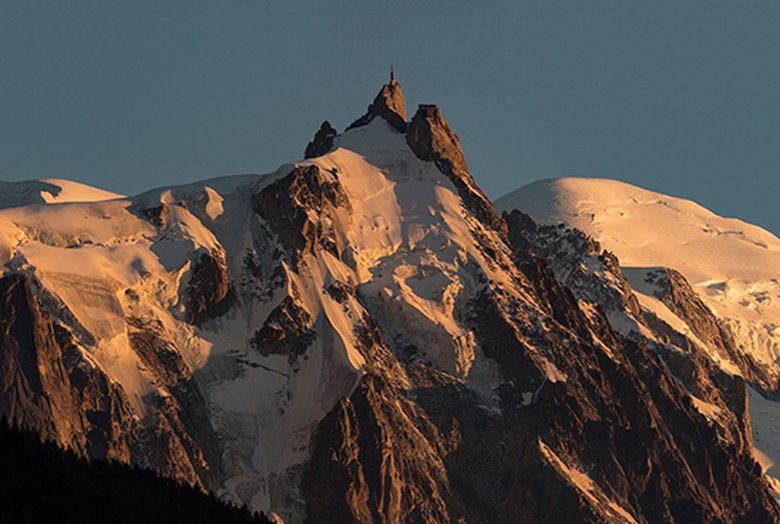
In a sweeping motion he gestures towards the snow-capped mountaintops behind us, which indeed present an impressive sight in the evening sun. Only a few kilometres further, at the foot of the jagged peak of Aguille Verte, the Glacier d'Argentière spills into the valley. It is Luc Moreau's 'glacial home base': After studying geography in Grenoble, he came to Chamonix in 1985 to study glaciology. His master thesis is on the Argentière glacier's displacement.
The main focus of your research is glacial displacement and the hydrology of meltwater. Could you briefly explain what that is for non-experts?
Luc Moreau: It's about the relationship between the mass of a glacier, the meltwater and the speed of its movement. When a glacier loses volume, its movement also decreases. Of course not all glaciers are the same. It also depends on other factors like whether it is a valley glacier or a hanging glacier, a warm-based or cold-based glacier…
Glaciers can be warm?
Luc Moreau: Yes, we make a distinction between warm-based or temperate glaciers and cold-based ones. Temperate glaciers have a temperature only slightly above melting point. The ice thus slides on a thin meltwater film. Cold-based glaciers, which only exist at heights above 4000 metres, for example at the summit of Mont Blanc, or in the polar region, have a temperature well below melting point. The ice is literally frozen to the surface beneath it and thus only moves very slowly.
What are you currently working on?
Luc Moreau: I still have a research mission here at the Glacier d'Argentière, aimed at putting the meltwater to use. A tunnel system brings water from beneath the glacier to a reservoir about ten kilometres from here, where it is turned into clean energy. I also head expeditions to glaciers in Greenland, Patagonia, and elsewhere. I feel very strongly about passing on my knowledge, so I teach glaciology at Ecole Nationale de Ski et D'Alpinisme in Chamonix, give lectures at various universities and guide tours to regional glaciers like the Mer de Glace.
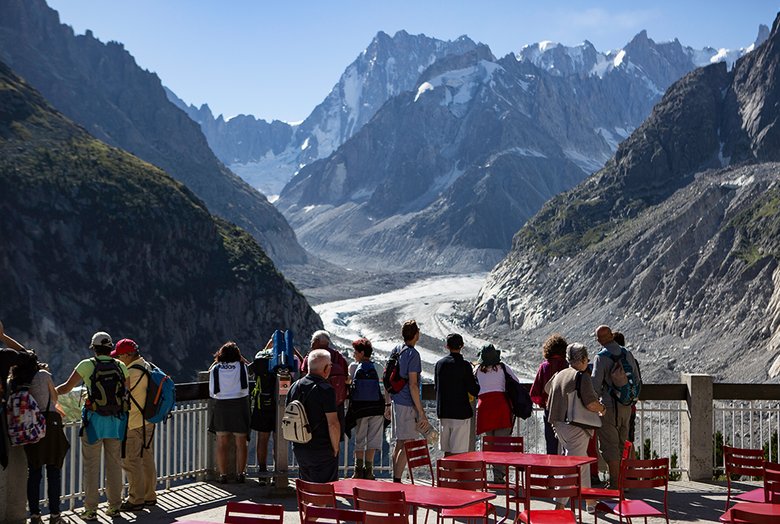
The Mer de Glace is France's largest glacier and one of the most popular hiking destinations in the region. For less experienced hikers, there is an old rack railway, which brings guests from Chamonix to Montenvers lookout point. Here, you can enjoy a spectacular view of the glacier terminus winding its way down the mountain. Approximately 12 kilometres long, the ice sheet is up to 400 metres thick in some spots. However, the glacier has been retreating for decades. In the 1960s, a cableway was built to directly connect Montenvers with the glacier. Today, visitors must climb up an additional staircase of 300 steps to reach the ice.
According to current calculations, Mer de Glace is losing four to six metres in depth each year. Are you concerned about this?
Luc Moreau: Yes and No. We've had some very warm summers in the past 25 years. Of course that isn't good for the ice, but it also isn't the first time the glaciers are shrinking. In the past 10 000 years there were several 'little ice ages' during which the glaciers' sizes varied. The Glacier d'Argentière, for example, has retreated three kilometres over the past 200 years, equalling about a third of its total volume. 5000 years ago, however, it was even four kilometres shorter! During the most recent Little Ice Age, between the Middle Ages and the 19th century, it grew again and almost reached the village. So today it is about the same size as during medieval times.
So changes in size are natural. What role do humans play when it comes to shrinking glaciers – especially in regard to global warming?
Luc Moreau: It is a fact that we are responsible for changes in the atmosphere and that we have caused a rise in temperatures. But what role exactly humans play no one can really say. At least it's a bit more complex than 'The climate is warming up, so the glaciers are melting'. Earlier I mentioned how sensitive glaciers are: They are elements in nature, which react very quickly to changes in environmental conditions. We have learned that precipitation also plays a crucial role: Warm, wet winters are better than cold winters without snow. Altogether, however, we still don't know all the factors.
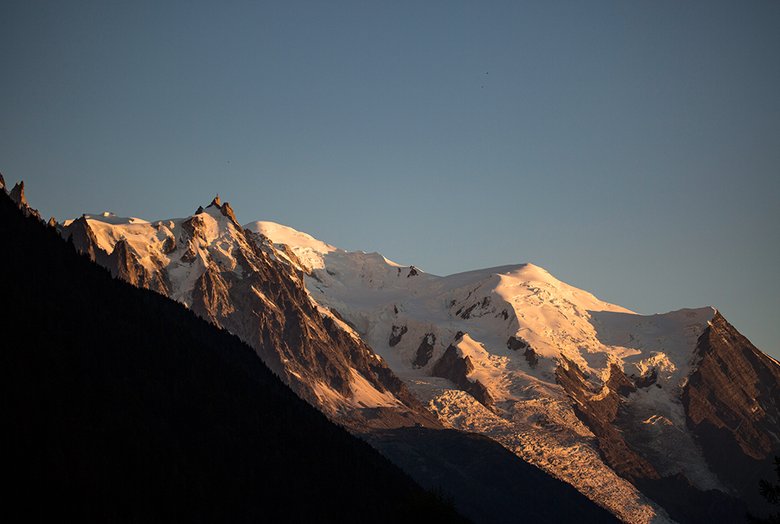
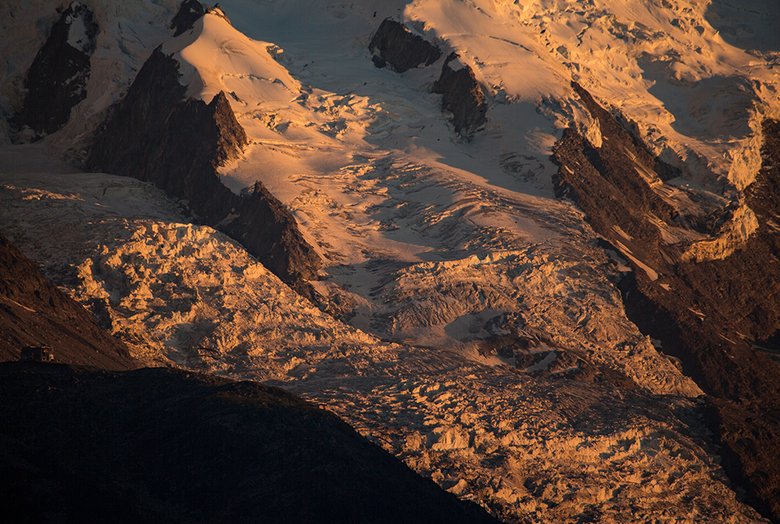
How important are glaciers for the people in the region today?
Luc Moreau: Immensely important, of course! We need them to generate clean energy and we need them for tourism. Glaciers define our region. Many years ago, people were worried that the glaciers were coming too close to their villages. Nowadays, we are worried that they will disappear.
It has become late on the church steps of Argentière. Luc Moreau checks the time and jumps up in surprise: "Oh no, I completely lost track of time, I have to get to my conference!" It seems like this happens quite frequently when he talks about his passion. Luckily, there's time for one more question: If he has a favourite glacier? He pauses for a moment then points up at the Glacier d'Argentière. "It's the first glacier I researched. And it's also the most beautiful 'office'…"
Text: David Schwarzenbacher // friendship.is
Photos: Florian Lechner // friendship.is
Nov. 2, 2016

